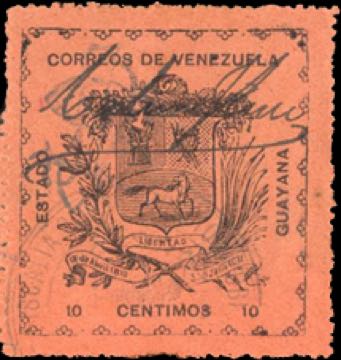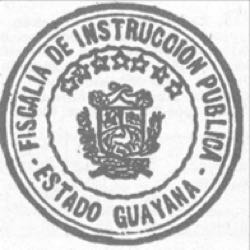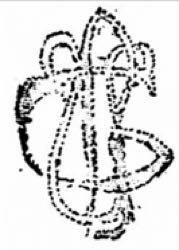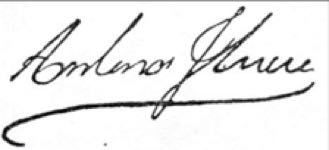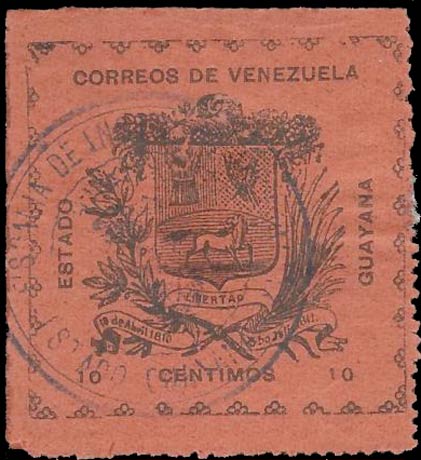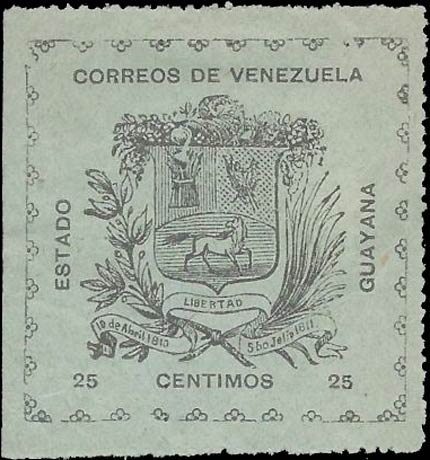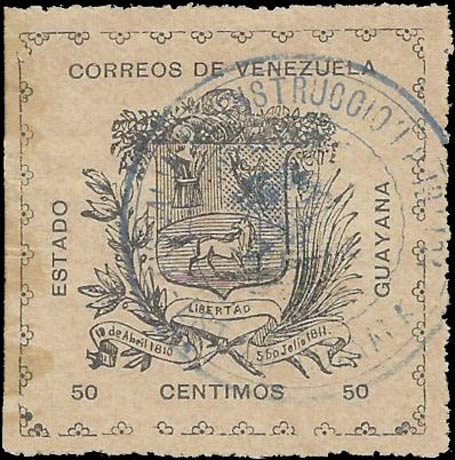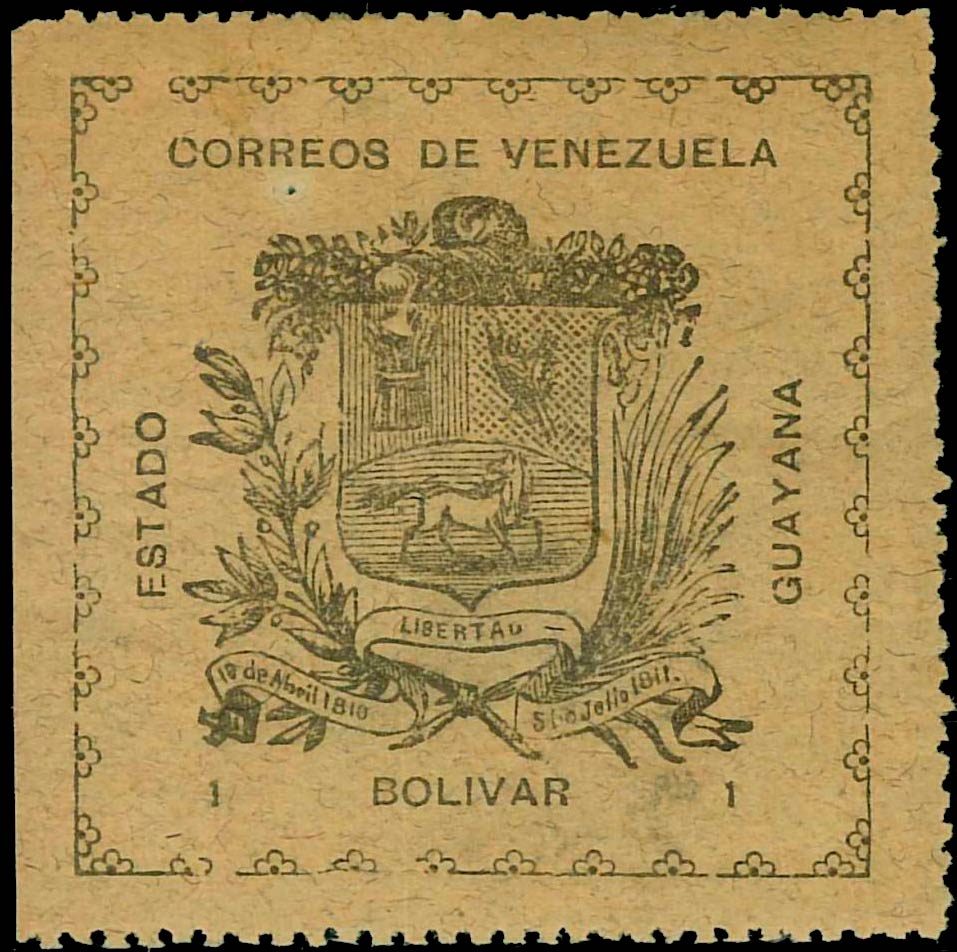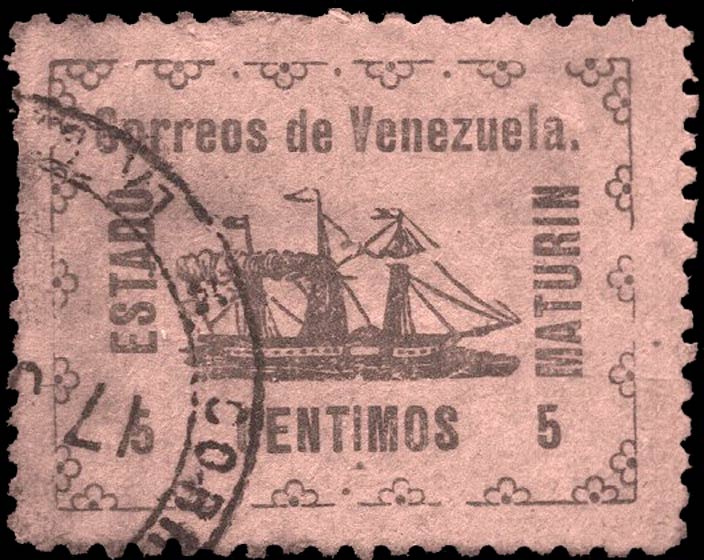1902. Carupano, inscription ‘CORREOS VALE B’
Genuine vs. Forgeries
1903. Revolutionary Issues for Guayana and Maturin
Genuine vs. Forgeries
They are called large Guianas and issued in five values: 5 c. black on pink paper, 10 c. black on orange paper, 25 black c. on blue paper, 50 black c. on yellow paper and 1 black b. on grey paper. Some of these stamps have the Prosecutor’s Office of public instruction overprint, the Sucre Monogram, a signature, or a mixture of all of them. In theory, there would be twelve different combinations, but nearly impossible to collect in practice. They were in use from mid-April until mid-June of 1903 and only in correspondence to the outside, mainly to Trinidad. This explains the rarity of actually traveled envelopes.
The counterfeits were printed in colors very similar to the authentic and with the same values. They do not present any problem to differentiate themselves from the authentic, since the genuine have nine flowers along the horizontal edges and the false have ten. The postmark “Fiscalía de Instrucción Pública, Estado Guayana” is always with an external diameter 36 mm, but never with the signature of Antonio Sucre or monogram. The difference in diameter is because there is a little more of separation between the inner circle and outside of the postmark. However, we have seen the same postmark on a real stamp.




